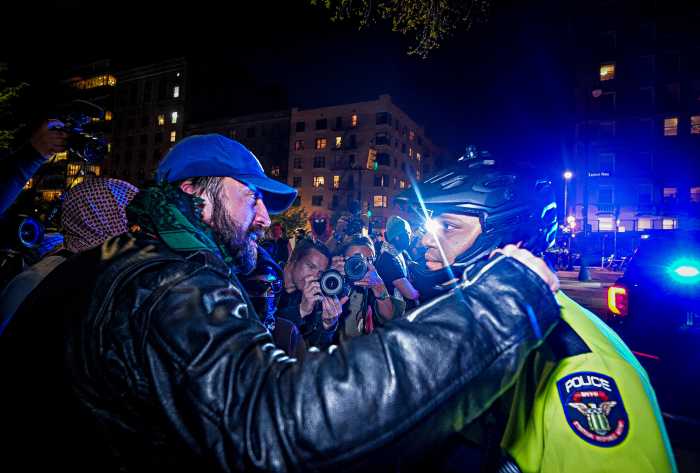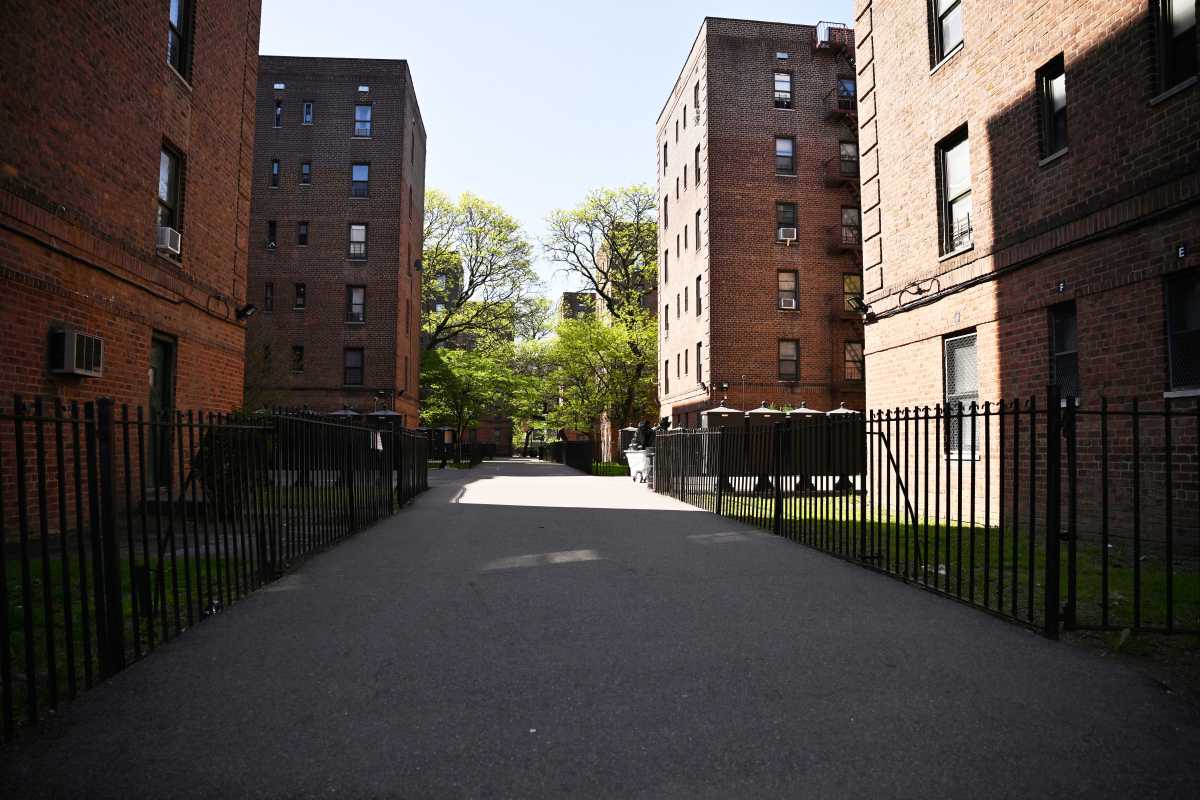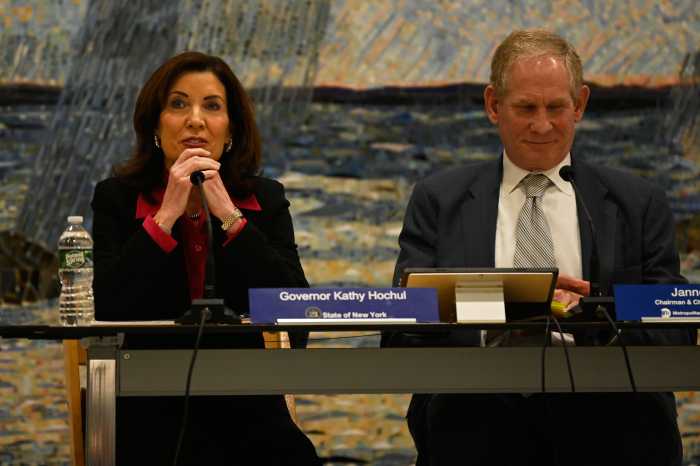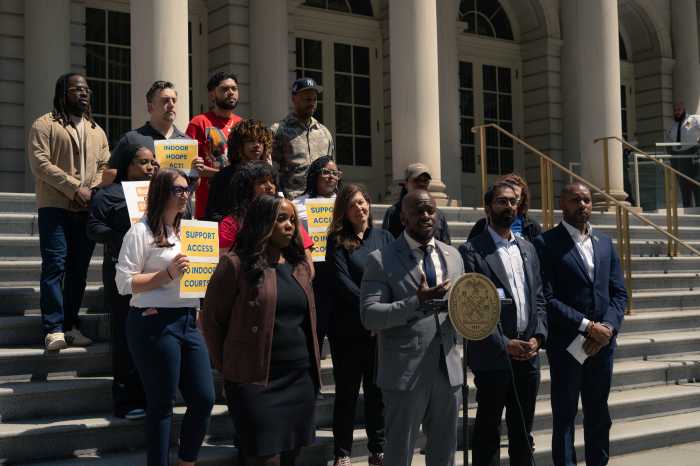
On a sweltering afternoon on Staten Island, César Vargas kept a close eye on the cars lining the street outside Richmond County Supreme Court. Vargas, a newly minted Army Reserve specialist and one of the first undocumented immigrants admitted to the New York State Bar, walked by an idling unmarked police car concealing a large tattooed man with a gun.
Vargas quickly knew it wasn’t Immigration and Customs Enforcement. Besides the NYPD document in the window, the Chevy Impala, a law enforcement favorite, would have been far too obvious. He said ICE agents in plainclothes had begun using rental cars, working in teams outside the courthouse, and snatching up undocumented people they spot from down the block.
Vargas explained this while showing volunteer Ismary Calderón what to look out for when patrolling ICE hot spots as part of a community volunteer network on Staten Island that provides assistance for immigrants facing arrest and deportation. The community patrols work in teams of two, visiting known ICE hot spots on the island starting at 5 a.m., informing people of their rights and documenting ICE activity.
ICE has vastly increased operations resulting in arrests at New York State courthouses since 2016, according to a report by the Immigrant Defense Project.
“We want to remind them that the community has eyes out there,” Vargas said.
Gonzalo Mercado, executive director of La Colmena, a community job center involved in the ICE patrols, said that at least three people his group has worked with had been arrested outside court buildings on Staten Island.
In one case, Mercado said, a father headed into court to clear up a small infraction.
When he left, ICE was waiting.
“And ICE, in an unmarked car, in plainclothes, just came close to them, and they basically ripped the father off the wife and the child,” Mercado said.
Vargas said the team of more than 20 advocates works in shifts and consists of teachers, students and other community members.
“Our community is so vulnerable when they’re in the shadows, when there are no eyes out there. But we want to be those eyes and bring light to any enforcement action,” he said.
“We’re not going to fear, but we are going to make sure that the community knows their rights and that we’re a presence out there,” he added.
Keeping an eye on ICE presents unique challenges on Staten Island, home to a large immigrant community but not subject to the same media attention as, say, Sunset Park.
“When we talk about the forgotten borough, it’s in every sense of the word, from the politics, to the enforcement. We are a very conservative borough,” Vargas said, adding “We don’t have the Alexandria Ocasio-Cortez, we don’t have the Carlos Menchaca.”
Rep. Ocasio-Cortez represents parts of Queens and the Bronx and has been an outspoken advocate of immigrant rights in Congress, and Council member Menchaca heads up the New York City Council’s Immigration Committee.
A spokesperson for ICE did not immediately respond to a request for comment on their operations on Staten Island.
Another reason Staten Island presents a different set of issues for undocumented immigrants than other parts of the city is that it has more traditional homes than big apartment buildings, so once ICE gains access, it can put everyone inside at risk, Mercado said.
“We might have talked to one of those families in that address, and they know all their rights, and they know what to do if ICE comes, but if they live on the second floor and the family on the first floor opens the door without knowing anything, everybody inside is at risk,” he said.
At the courthouse, Vargas and Calderón updated a crowdsourced map, indicating that they had seen no ICE activity that day. But Vargas said they’ll keep coming back.
“For them it’s just detaining, arresting, taking this person out of the environment. The environment for us is our neighborhood, our families.”

































